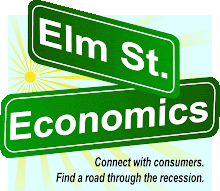Banks make money, generally speaking, in one of two ways: Net interest income (the difference between the lower interest they pay on deposits and the higher interest they charge on loans), or fees for service (ranging from mortgage origination fees to paid investment services). One of the more lucrative service fees they’ve been able to collect, until recently, is the penalty for an overdraft. But with the recent passage of new banking regulations, a banks’ ability to charge for overdrafts has been significantly limited… so they’re looking for new ways of creating revenue, as well as new ways of reducing expenses.
As this recent article from USA Today points out, free checking accounts will be way that banks accomplish both higher revenues and lower expenses. Click here to read the story.
Implications: Free checking was, in a way, the same kind of “lost leader” that a grocery store might offer when it’s having a sale. The grocer doesn’t want to lose money on the sale item, but realizes that other products will be sold at a profit when the grocer uses a lost leader to coax the customer into the store.
The same principle held true for “free checking.” Banks never wanted to offer it, but knew that in doing so, they’d be in a position to build other more profitable relationships with their customers. And when overdraft fees were allowed, it made sense for the bank to have as many open checking accounts as possible.
Now that the “deals” on checking accounts have been ruled-out by regulators and legislators, how will the consumer feel about paying for things—in other ways—they used to think of as “free?”
Mike Anderson
Monday, October 25, 2010
Many banks cashing-out of free checking (and other free services)
Labels:
Banking,
Elm Street Economics,
Financial,
Trend Watching
Subscribe to:
Post Comments (Atom)



No comments:
Post a Comment